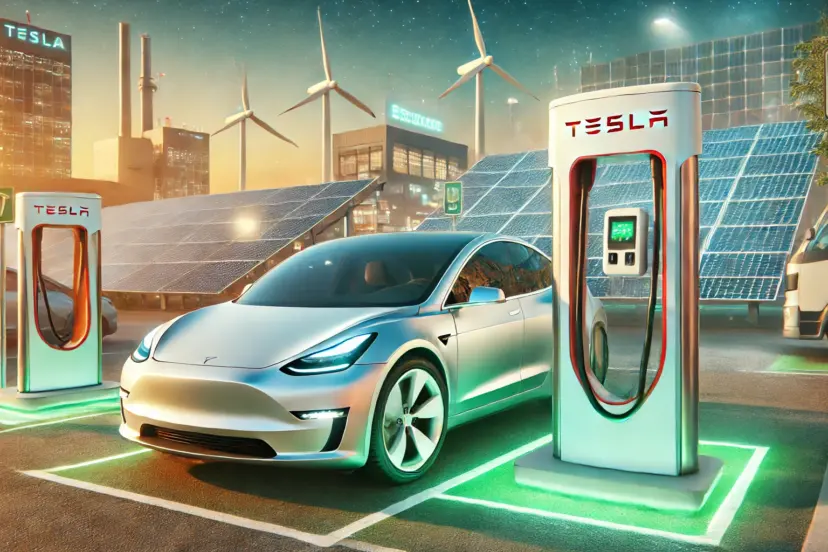What Does EV Stand For? Let’s Talk Electric Vehicles
By now, you’ve undoubtedly heard someone bring up “EVs.” Where have you been, if not? (Just kidding—sort of!) “EV” is a ubiquitous term nowadays, and it nearly invariably refers to an electric car. These futuristic rides are revolutionary, not simply cool. Together, let’s discuss what doe EV stand for and discover why everyone is so excited about them.
What Is an Electric Vehicle (EV)?
So, an EV is basically a car, but instead of gas, it runs on electricity. Think of it as a giant rechargeable battery on wheels. Instead of stopping at the gas station (ugh, the smell of gas), you plug it in, charge it up, and you’re good to go. It’s like charging your phone—only bigger and way cooler.
Types of Electric Vehicles
Not all EVs are created equal, and that’s okay! There are three main types, and knowing the difference will make you sound like an EV pro at parties (or at least during small talk).
- Battery Electric Vehicles (BEVs): These are the full-on, hardcore EVs. No gas, no emissions—just pure electric goodness. Teslas? Yep, they’re BEVs.
- Plug-in Hybrid Electric Vehicles (PHEVs): These are like the best of both worlds. You can charge them up, but they also have a gas backup. Perfect for those “what if I run out of battery” worries.
- Hybrid Electric Vehicles (HEVs): These mostly run on gas but get a little electric help to save fuel. No plug-in needed. Think of it as dipping your toes into the EV world.
How Do Electric Vehicles Work?
Here’s the gist: EVs swap out the engine for an electric motor and a big ol’ battery. When you hit the accelerator, electricity flows from the battery to the motor, and—voilà!—the wheels start turning. (It feels like magic, but it’s just science doing its thing.) Unlike gas cars, there’s no roar of an engine. Instead, EVs are whisper-quiet, which feels almost eerie at first. Trust me, you’ll get used to it.
The Rise of EVs
Let me tell you, EVs are having their moment. A decade ago, they felt like something from a sci-fi movie. Now? Everyone and their neighbor seems to be considering one. It’s not just because they’re trendy (although, let’s be honest, they’re pretty stylish). Governments are pushing for cleaner energy, and people are realizing how much money they can save in the long run.
Benefits of EVs
Oh boy, where do I start? First off, they’re so much better for the environment. No tailpipe means no emissions, which is a win for everyone. Plus, they’re super cheap to “fuel” (electricity is way cheaper than gas), and maintenance is a breeze. No oil changes, no spark plugs—just plug it in and go. And can we talk about how quiet they are? It’s like driving a spaceship. (Or at least how I imagine driving a spaceship would feel.)
Challenges Facing EV Adoption
Okay, full disclosure: EVs aren’t perfect (yet). The upfront cost can make you do a double-take, but prices are dropping fast. Then there’s the whole charging situation. While charging stations are popping up everywhere, it’s not quite as convenient as pulling into a gas station. And range anxiety? It’s real. (Am I really going to make it home, or am I going to be stranded on the highway?) Luckily, newer models are tackling this with longer ranges.
EV Batteries: The Heart of the Vehicle
Let’s talk about the elephant—or rather, the battery—in the room. EV batteries are the most critical part of the car. They’re big, they’re powerful, and yes, they’re expensive. But they’re also the reason EVs are even possible. Lithium-ion batteries (like the ones in your phone, just way bigger) store energy to power the car. Battery tech is improving so quickly, it’s like they’re on steroids. Longer life, faster charging—you name it, they’re working on it.
Charging an Electric Vehicle
Charging an EV isn’t as complicated as it sounds. You can plug it into a regular wall outlet (called Level 1 charging), but it’s slow—like “wait overnight” slow. If you’re serious, you’ll want Level 2 charging, which you can get at home or at public stations. And if you’re in a hurry? Look for a fast charger, which can juice up your car in about 30 minutes. (Perfect for grabbing coffee and scrolling Instagram while you wait.)
How Far Can EVs Go?
Let’s get real—nobody wants to be stuck in the middle of nowhere with a dead battery. Most modern EVs can go 200 to 400 miles on a single charge, depending on the model. Tesla leads the pack here, but brands like Hyundai and Ford are catching up. If you’re planning a road trip, you’ll need to map out your charging stops. (Pro tip: Download a charging station app. It’s a lifesaver.)
Environmental Impact of EVs
EVs are a big deal for the environment. By ditching gas, they produce zero emissions while driving. That means cleaner air and fewer greenhouse gases. Sure, building EV batteries has some environmental impact, but companies are getting better at recycling and using sustainable materials. At the end of the day, EVs are a huge step toward fighting climate change.
Maintenance of EVs
Let me just say this: EVs are low-maintenance champs. There’s no engine oil to change, no spark plugs to replace, and no exhaust system to worry about. The brakes even last longer thanks to regenerative braking (fancy, right?). The only real concerns are tires, wiper fluid, and—eventually—the battery, but that’s years down the road.
Popular EV Brands
If you’re thinking about buying an EV, you’ve got options. Tesla is the obvious rockstar, known for its sleek designs and long range. Nissan’s Leaf is a solid budget-friendly choice. Chevy’s Bolt EV is another great daily driver. And for the truck and SUV lovers, Rivian is making waves with its rugged, electric beasts. (Spoiler: They’re awesome.)
The Future of EVs
Here’s a fun thought: In a few years, we might all be driving EVs. Battery costs are dropping, ranges are increasing, and charging is getting faster. Governments are even setting deadlines to phase out gas-powered cars. The future isn’t just electric—it’s happening right now. (Feels kinda cool to be living in such a revolutionary time, doesn’t it?)
EVs vs. Gas-Powered Cars
When it comes to EVs versus traditional cars, it’s a no-brainer for me. EVs are quieter, cleaner, and cheaper to run. Sure, gas-powered cars still have the edge in convenience for now, but EVs are catching up fast. Plus, there’s something satisfying about skipping the gas station. (Seriously, why does it always smell so bad there?)
Are EVs Right for You?
Thinking about getting an EV? Here’s the deal: If you want to save money on gas, reduce your carbon footprint, and enjoy a smooth, quiet ride, they’re a fantastic choice. But if you drive long distances in areas without many charging stations, you might want to wait a bit. Either way, it’s worth considering. (I mean, who doesn’t want to feel like they’re driving the car of the future?)
Busting Myths About EVs
Let’s clear up a few misconceptions. No, EVs aren’t slow. In fact, many can out-accelerate sports cars. And no, the battery won’t die on you after a few years—most are built to last a decade or more. People also think charging takes forever, but with fast chargers, you’re good to go in no time. EVs are here to stay, and the rumors just can’t keep up.
The Global Push for EVs
Globally, EVs are taking over. Norway is leading the charge (pun intended), aiming for all new cars to be electric by 2025. China is cranking out EVs like nobody’s business, and the U.S. is expanding its charging networks like crazy. It’s an exciting time to be part of this electric revolution.
EV Innovations to Watch
The EV world is changing fast, and it’s thrilling to watch. Solid-state batteries (basically super-batteries) are on the horizon, promising longer range and faster charging. Wireless charging might make plugging in a thing of the past. And let’s not forget self-driving tech, which pairs perfectly with EVs. (Can you imagine a car that drives itself and doesn’t use gas? Mind-blowing.)
The Role of EVs in a Sustainable Future
EVs are more than just cars—they’re a symbol of progress. They’re paving the way for a cleaner, healthier planet. By reducing our dependence on fossil fuels, they’re helping us fight climate change head-on. It’s not just about driving; it’s about driving change.
Environmental Benefits of Electric Vehicles
A recent study confirms that electric vehicles (EVs) have significantly lower life cycle emissions compared to gasoline-powered cars. In the United States, EVs produce 60–68% fewer emissions over their lifetime, highlighting their potential in reducing greenhouse gases and combating climate change. This substantial reduction is attributed to the cleaner energy sources utilized in EV operations and the absence of tailpipe emissions. As advancements in battery technology continue and the adoption of renewable energy sources increases, the environmental advantages of EVs are expected to grow even further. For a comprehensive understanding, you can explore the full research on EV life cycle emissions.
Essential Electric Vehicle Accessories Available on Amazon
Enhancing your electric vehicle (EV) experience is easier with the right accessories. Here are some top-rated products available on Amazon that can add convenience and functionality to your EV journey:
- Lectron Tesla to J1772 Charging Adapter
This adapter allows non-Tesla EVs to charge using Tesla High Powered Connectors, Destination Chargers, and Mobile Connectors. It supports up to 48 amps and 250V, making it a versatile tool for various charging scenarios. - SEVEN SPARTA Charging Cable Holder with Chassis Bracket
Designed for Tesla Model 3, Model Y, Model X, and Model S, this cable organizer keeps your charging area tidy and your cable protected. Its durable construction ensures longevity and ease of use. - Lectron Electric Vehicle Charger Nozzle Holster Dock & J-Hook Combo
Compatible with all J1772 EVs, this holster dock and J-hook combo provides a secure place to store your EV charger nozzle and cable, helping to maintain an organized charging station. - BMZX Tesla Charger Holder Charging Cable Organizer
This wall mount connector bracket adapter is suitable for Tesla Model 3, Model Y, Model S, and Model X. It offers a convenient solution for organizing your charging cable and keeping your garage neat. - Lectron V2L Adapter – Vehicle to Load Adapter Compatible with Hyundai Ioniq 5
This adapter enables the use of your vehicle’s battery to power external devices, adding versatility to your EV’s capabilities.
FAQs About Electric Vehicles
What does EV stand for?
EV stands for electric vehicle, a car that runs on electricity instead of gasoline.
Are EVs really eco-friendly?
Absolutely. They produce zero emissions while driving, though battery production does have some impact. Overall, they’re much better for the environment.
What is the average charging time for an EV?
It depends. A home charger might take 8–12 hours, but a fast charger can top you off in about 30 minutes.
Are EVs expensive to maintain?
Not at all! With fewer moving parts, EVs are much cheaper to maintain than traditional cars.
Can EVs handle long road trips?
Yep! Modern EVs can travel 200–400 miles on a single charge, and charging stations are popping up everywhere.
So, there you have it—the lowdown on EVs. Whether you’re already an EV fan or just EV-curious, one thing’s for sure: the future of transportation is electric, and it’s looking pretty bright.




